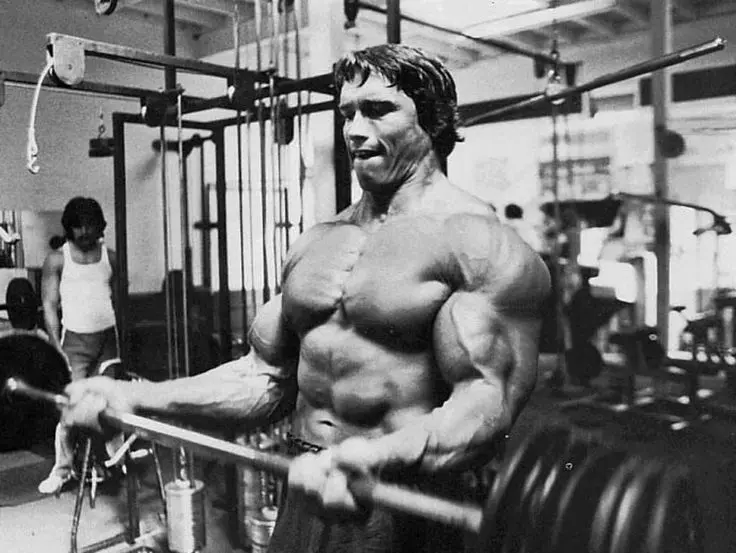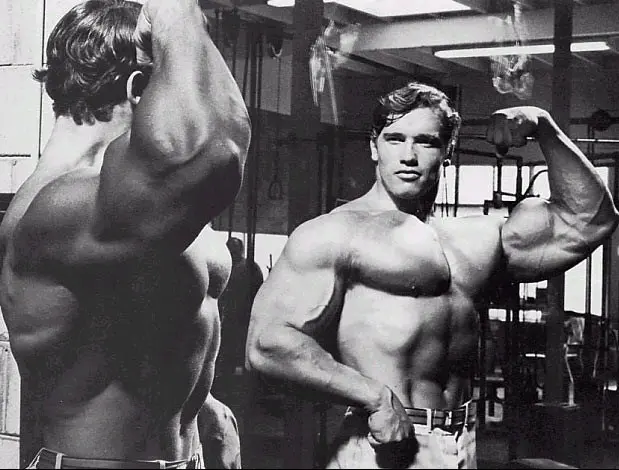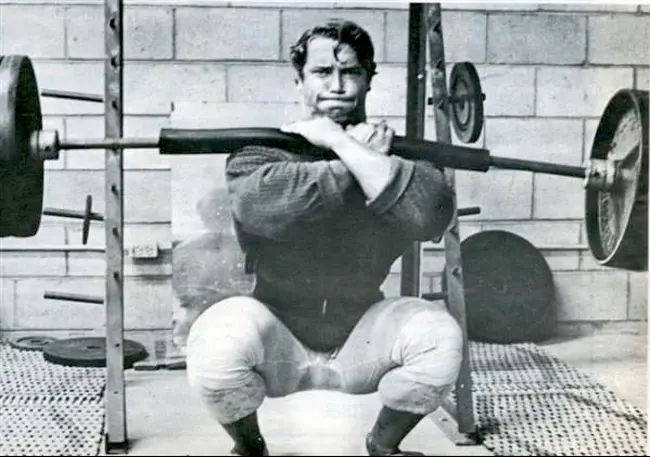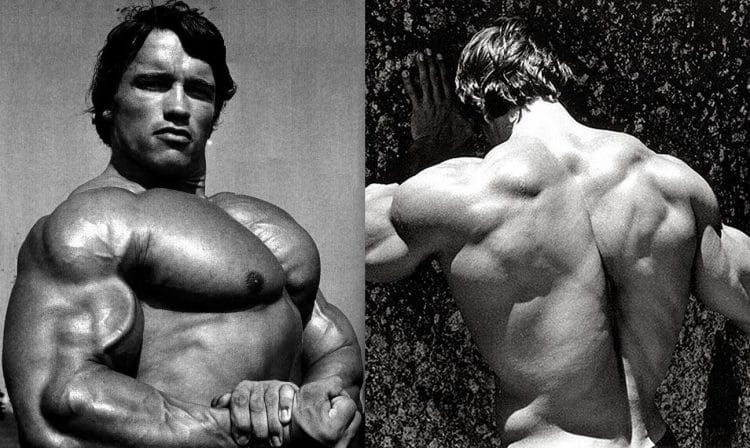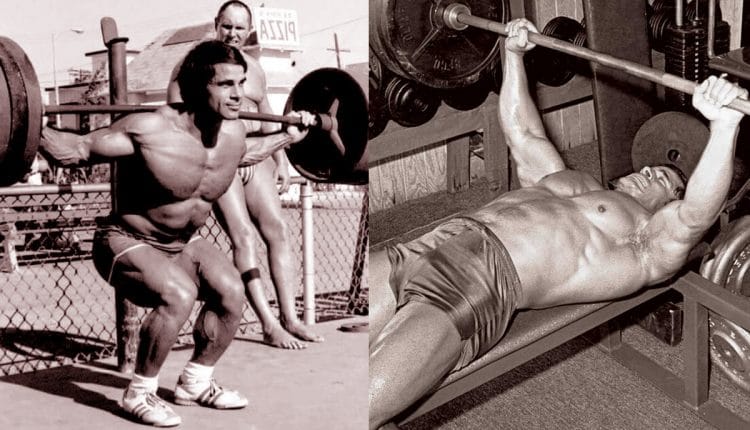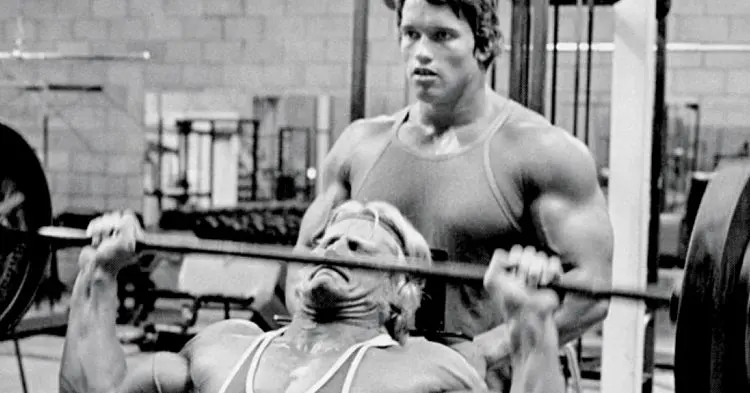If you want to get the best results from your gym time, you need to follow a well-designed training program. It doesn’t matter if you are a bodybuilder, powerlifter, Olympic lifter, or just a fitness fanatic; your program is your recipe for success.
Following a program means your workouts will be organized, progressive, and more likely to produce the results you want.
One option is to do full-body workouts, where you hit the gym 2-3 times per week, training all your muscles each and every time. While this traditional approach can work, it can also be exhausting.
A lot of lifters prefer to train different muscle groups or body parts on different days. This is called a split routine because you “split” your body down into smaller, more manageable sections. Split routines are popular with bodybuilders, but recreational exercisers can use them too.
There are lots of different split routines that you can use to reach your training goals, from upper body/lower body splits to workouts that involve training six or more days per week. The 3-day workout split is a very popular choice with exercisers who are short on time but don’t want to follow a full-body workout.
In this article, we explore the benefits and drawbacks of the 3-day split and provide you with some examples to try.
Level Up Your Fitness: Join our 💪 strong community in Fitness Volt Newsletter. Get daily inspiration, expert-backed workouts, nutrition tips, the latest in strength sports, and the support you need to reach your goals. Subscribe for free!
What Is a 3-Day Workout Split?
A 3-day workout split involves training three days per week. Each workout is dedicated to different muscle groups or body parts, and each one is usually trained once per week. However, with some careful planning, it’s also possible to use a 3-day split to train muscle groups twice per week.
The 3-day split is a workout framework, and there is no set routine to follow. It’s up to you to decide what muscle groups you’re going to train each day. Because the 3-day split is very flexible and versatile, you can modify this framework to match your current fitness goals and needs.
3-Day Workout Split – Advantages
A lot of exercisers automatically gravitate toward training three days a week. It’s a popular split that can produce good results. The main advantages of the 3-day split include:
Manageable training frequency – training three days a week is manageafble or most people. With more rest days than workouts, you should be able to maintain your training schedule even when you are busy. This is not always the case for workout splits that demand more weekly workouts, such as the 5-day split.
Plenty of time for rest and recovery – if you are an older exerciser or find that intense workouts take a lot out of you and you need more time to recover, the 3-day split could be your best choice. You can train every other day, providing your body with all the recovery time you need to get over your last workout.
Train your muscles from a variety of angles – by dedicating one workout per week to just a few muscle groups, you’ll have the time and energy to train your body with a variety of different exercises for optimal hypertrophy. Such a multi-angled approach is not usually possible when you do full-body workouts.
Leaves plenty of time for other activities – with just three workouts per week on your training schedule, you’ve got plenty of time for other activities and hobbies. For example, you could hit the gym Tuesday, Thursday, and Saturday and then play sports or do cardio Monday, Wednesday, and Friday. Lack of time and energy could make this impossible if you follow something like a 6-day workout schedule.
A good method for beginners – if this is your first foray into split workouts, the 3-day split is an excellent place to start. It’s neither too complex nor too demanding for most beginners. Doing a 3-day split means you have somewhere to go as you become accustomed to this type of training, such as a 4-day or 5-day split.
3-Day Workout Split – Disadvantages
The 3-day workout split is popular because it works. However, there are a few drawbacks too. Consider the following before starting a 3-day workout split:
Limited training time – splitting your body down into just three workouts means you won’t have a lot of time per muscle group or body part. During a 5-day split, you’ll probably have an entire training session for just one muscle group, e.g., your lats. With only three workouts per week, you’ll need to train two or more muscle groups per workout. This means you won’t be able to do as many exercises or sets, which could impede your progress.
Not enough training volume for more advanced lifters – the more experienced you are, the more training volume your muscles can tolerate and need to grow. Unless you are prepared to spend two hours in the gym per workout, you may find that you simply do not have the time to accumulate the volume necessary to get the results you want. That’s why a lot of exercisers soon graduate from a 3-day split to a 4-day or 5-day split.
Not ideal for weight management – training just three times a week means your weekly calorie expenditure may not be high enough to control your weight; either weight loss or weight maintenance. This is especially true if you are sedentary other than your gym workouts. You COULD do cardio on the days between your strength training workouts, but this could interfere with recovery if you do too much. If you follow a 3-day workout split, you’ll need to take care not to eat too much; otherwise, you could end up gaining fat as well as muscle and strength.
Level Up Your Fitness: Join our 💪 strong community in Fitness Volt Newsletter. Get daily inspiration, expert-backed workouts, nutrition tips, the latest in strength sports, and the support you need to reach your goals. Subscribe for free!
Sample 3 Day Workout Split Programs
There are several ways to interpret the 3-day workout split. Design your own or follow one of our examples below.
Before you start any of these workouts, make sure you spend a few minutes warming up and preparing your body for what you are about to do. Begin with a few minutes of easy cardio to raise your core temperature and increase blood flow.
After that, do a few dynamic flexibility and joint mobility exercises for the body parts you are about to train. Finally, do a few easy sets of the main exercises in your workout to ensure you are as warm and ready to work as possible.
Adjust the following workouts to match your training goal:
| Training Goal | Endurance | Hypertrophy | Strength/Power |
| Intensity | Low | Moderate | High |
| Load | <67% of 1RM | 67-85% of 1RM | >85% of 1RM |
| 1RM = 1-repetition maximum and is the maximum amount of weight that can be lifted once but not twice | |||
| Repetitions per set | 13-20 | 6-12 | 1-5 |
| Recovery between sets | 30-60 seconds | 1-2 minutes | 3-5 minutes+ |
3-Day Workout Split #1 – The Body Part Split
This is probably the most common way to do a 3-day workout split. You simply break your body down into three groups and train each one once per week.
| Monday | Chest and Back |
| Tuesday | Rest |
| Wednesday | Legs |
| Thursday | Rest |
| Friday | Shoulders and arms |
| Saturday | Rest |
| Sunday | Rest |
Chest and back
Legs
Shoulders and arms
- Seated dumbbell shoulder press
- Lateral raise
- Upright row
- Barbell biceps curl
- Concentration curls
- Barbell skull crusher
- Triceps pushdown
3-Day Workout Split #2 – The Powerlifting Split
This 3-day split is popular with powerlifters and power-builders. Each workout is based around one of the “big three” powerlifts and also includes a few assistance and accessory exercises to create muscular balance. This is a good option if you want to build muscle strength and size.
| Monday | Squat and assistance |
| Tuesday | Rest |
| Wednesday | Bench press and assistance |
| Thursday | Rest |
| Friday | Deadlift and assistance |
| Saturday | Rest |
| Sunday | Rest |
Squat and assistance
Bench press and assistance
- Bench press
- Paused bench press (2-second pause at the bottom of each rep)
- Close grip bench press
- Kroc row
- Face pull
- Dumbbell skull crusher
Deadlift and assistance
3-Day Workout Split #3 – The Push Pull Legs Split
The push-pull-legs routine is very popular and was used with great success by Mr. Olympia winners Frank Zane, Arnold Schwarzenegger, and many others.
This workout routine is often done twice to create a 6-day training program, but it will produce decent results if you do it as a 3-day workout split.
| Monday | Push |
| Tuesday | Rest |
| Wednesday | Pull |
| Thursday | Rest |
| Friday | Legs |
| Saturday | Rest |
| Sunday | Rest |
Push (chest, shoulders, triceps
- Dumbbell bench press
- Incline barbell bench press
- Pec deck
- Barbell overhead press
- Lateral raise
- Dumbbell kickback
- Diamond push-up
Pull (back, biceps, abs)
Legs
- Zercher squat
- Single-leg Romanian deadlift
- Leg extension
- Leg curl
- Box jump
- Seated calf raise
- Standing calf raise
3-Day Workout Split #4 – The Upper / Lower Full Splits
Most 3-day split workouts involve training each muscle group once per week. While this training frequency can work, a lot of exercisers will do better if they hit each body part twice per week. This variation of the 3-day split allows you to do just that.
| Monday | Lower body |
| Tuesday | Rest |
| Wednesday | Upper body |
| Thursday | Rest |
| Friday | Full body |
| Saturday | Rest |
| Sunday | Rest |
Lower body
Upper body
- Guillotine bench press
- Yates barbell row
- Arnold press
- Chin-up
- Cable lateral raise
- EZ bar biceps curl
- EZ bar decline skull crusher
Full body
- Barbell back squat
- Romanian deadlift
- Dumbbell bench press
- Seated row
- Dumbbell shoulder press
- Lat pulldown
- Dumbbell curl
- Overhead triceps extension
3-Day Workout Split Routine – Wrapping Up
If you came here looking for the best 3-day workout split, we’ve got bad news and good news. The bad news is that there is no single best way to use this popular framework, and there is no official 3-day workout split, either.
The good news is that there are lots of ways you can interpret the 3-day split and adapt it to your own training goals, preferences, and current level of fitness and strength.
Training three days a week is a good target for most exercisers; after all, even if you are busy, you should be able to find time to hit the gym three times. However, it also means your program may feel a little crowded, as you’ll need to cram a lot of exercises into each workout.
The 3-day split is ideal for beginner and early intermediates but maybe too limiting for more advanced exercisers. However, like any program, if you commit to the process and work hard and consistently, even training three days a week will produce great results.

